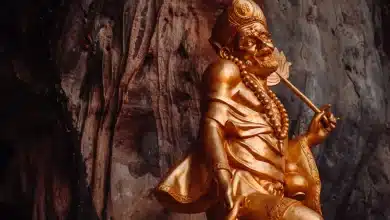The adventurers from Destination Extreme are on the edge of madness. These aren’t your typical adrenaline junkies. These are world-class, elite athletes who love the edge. They’re always looking for the next record-breaking drop, impossible ascent or gravity-defying fall.
Destination Extreme is more than an action-packed show. Its core mission is to discover the spirit of adventure. It’s more than just pushing the limits of human endurance–it’s also about discovering places on Earth where they push back.
Each episode explores the geology, climate and spirit of places where human desire meets the fiercest forces of nature. The show asks us to investigate why certain terrains are sacred for pilots, climbers, base-jumpers, and surfers. What is it that draws them to a ridge or a wave, or a canyon?
This is destination extreme, where geography is not just a background. It’s your ultimate enemy, muse and playground.

The Mountains that Define You
Consider the jagged spines of the Himalayas. This is the Holy Grail for mountaineers. It’s not just because Everest is there, but because the sheer size of these mountains forces your body and mind into alien territory.
Climbers don’t describe their sensation in feet or metres, but rather in breath. You enter the Death Zone above 8,000 meters. The oxygen levels are so low, the body starts to shut down. Muscles deteriorate. Vision narrows. Slower thinking. Every step is an act of resistance.
They go. The drama of the climb is as important as the summit. Long corridors of glacial snow, the sound and feel of the crampons, or the howling wind across the ridge. In destination extreme, you will meet climbers from all over the world who have travelled halfway around the globe to succeed on a ice wall.
One mountaineer explained in low tones that it’s not just about conquering the mountains. It’s about facing yourself in an environment that doesn’t care if you succeed or fail.
Oceans that Breathe and Blow
Teahupo’o is a tiny village located on the southwest coast of Tahiti. It’s known for having some of the world’s most dangerous and heavy waves. The coral reef is just below the surface of the water, so the wave does not just rise, but it jacks up and folds into a thick glassy barrel, slamming onto razor-sharp rocks in only inches of water.
Surfers from Australia, California and Portugal fly in to ride this beast. It’s not only about the wave, it’s also about the ritual. Checking the forecasts for swell. Watching the waves roll in. Feeling the ocean’s pulse under your board. The sea is alive and breathing in this remote part of the South Pacific.
In Destination Extreme, a veteran surfer of big waves explains why he continues to return: “This wave requires everything.” You enter into a contract with the wave. It will sometimes decide to collect.
Geographic danger is real. Many surfers leave the water bloodied, bruised or worse. They return time and time for that moment of communion.
Valleys that Dare You To Jump
What about the sky? It’s not about just falling for base jumpers and wingsuit flyers. They’re about flying across the earth. The cliffs in places like Lauterbrunnen valley or the knife-edged fjords in Norway don’t simply fall; they invite you to leap.
Lauterbrunnen, also known as “The Valley of Death”, is not a hyperbole but the truth. It’s one the most dangerous base jumping spots on the planet, with its steep 300 metre cliffs. Winds are unpredictable. The margin of error is measured in microseconds.
Jumpers still flock to this area like pilgrims. Why?
One flyer says, “The geography makes it irresistible.” The cliffs are sheer. The air is fresh. The valley floor… feels like a dartboard. You fall fast. “If you are not perfect, don’t give up.”
The show captures the tension of the jumpers as they tighten their harnesses to the beautiful, but terrifying pause just before the leap. You can almost hear the wind as they fly between rocks, trees and ridges.

Deserts that Test Your Soul
Deserts are vast, empty spaces that test both the mind and the body. Motorcyclists in Namibia’s Skeleton Coast ride across landscapes that are so remote, they don’t look real. The dunes look like waves of ice. The heat shimmers on the horizon. The ride is less important than the isolation.
A desert enduro rider says, “Riding in this area is like riding on a different planet.” There’s no road. No noise. “Just you, your machine and the land.”
It’s not all barren, emptiness. Deserts have their own unique breathing. They move with the wind. They hide life in the most unlikely places. They remove distractions and force you to be in the moment. The Destination Extreme reveals that adventurers are often drawn to these “nothing places” where they find meaning.
When Earth and Sky merge
Few places in the world of human flight are as mystical as Interlaken, Switzerland, a mecca for extreme aviators and paragliders. Sharp alpine peaks are surrounded by emerald-colored valleys, glacier-fed lakes, and emerald valleys. This creates thermals and wind channels that pilots obsessively study.
Flying here means understanding how geography can be both an obstacle and an opportunity. You can be thrown into the rocks or lifted into the clouds by wind channels. You don’t fly over landscapes, you fly along with them. Harmony is the key.
A female paraglider from France says, “Every mountain is unique.” “Some are generous. Some are temperamental. You can learn to read their moods. “It’s like a dance.”
Destination Extreme brings this dance to life in slow motion. It’s more than just sport. It’s poetry.
The Human Element
The show is never able to forget the people, despite all the talk about terrain and conditions. The athletes. Locals. The locals. The storytellers. They are the storytellers.
Destination Extreme is unique in its ability to balance spectacle and soul. You don’t only see someone jump from a cliff, you hear the childhood dreams that brought them there. You’re not just watching a huge wave; you’re also meeting the surfer who has been surfing that break ever since he was young. The stories are told in accents from all over the world, adding new colours to the map.
Why place matters
Each extreme athlete shares the same truth: location matters. It’s not only about the sport, but also about the place where it happens. The rock formations of Utah. The caves of Yucatan. Greenland’s icebergs. Each destination presents a unique challenge that cannot be duplicated.
It might be flashy to jump in Dubai, but it’s not like Norway. Hawaii’s waves might be great, but they’re not Teahupo’o. Adventure isn’t about just doing something difficult, but about going somewhere that has meaning.
One climber says, “Every mountain was climbed.” “But not all mountains have been climbed, you.”
Behind The Scenes: Search
Finding these locations isn’t always easy. Destination extreme producers scour the world, speaking to local guides and scouring climate information. They even analyse wind patterns to find locations with both visual awe as well as real danger. They’re also looking for stories, not just beauty. Geology. Culture. Conflict. Spirituality. Spirituality.
They find some hidden gems like forgotten gorges in Central Asia or unclaimed peaks of the Andes. Sometimes they even discover surf breaks that are only accessible on foot or by boat. When they do, they don’t only shoot the action; they also explore the culture of the place.
You are not only left breathless after each episode, but well-informed. You understand why the cliff is steep. Why does the wind change direction at 2 pm? Why do local legends surround those rocks? Dramatic geography becomes a part of the story.

A series that asks the big questions
Destination Extinction is a game that asks the following question: When human ambition meets Earth’s raw energy, what happens? Who are those who want to discover?
This show is for anyone who has ever wondered what it would feel like to land at the base of that mountain ridge. Anyone who has stood at the bottom of a wave or cliff will enjoy this show.
Or a desert, and felt their heartbeat quicken. Anyone who believes adventure isn’t a stunt but rather a way to connect with something greater than ourselves.
Final Thoughts: The Earth is Not a Set – It’s A Character
Destination Extreme offers more than action. It’s an ode to the wildest corners of the world and those who pursue them. It reminds us there are still wild places, where GPS won’t guide you and where only courage can be your compass.
One thing is for sure, whether it’s the wind-blasted cliffs in Norway, the sun-baked canyons in Utah or a massive wave that rises like a cathedral from a coral reef off Tahiti:
They’re not just places. They’re destinations. Extremes. They’re waiting.




